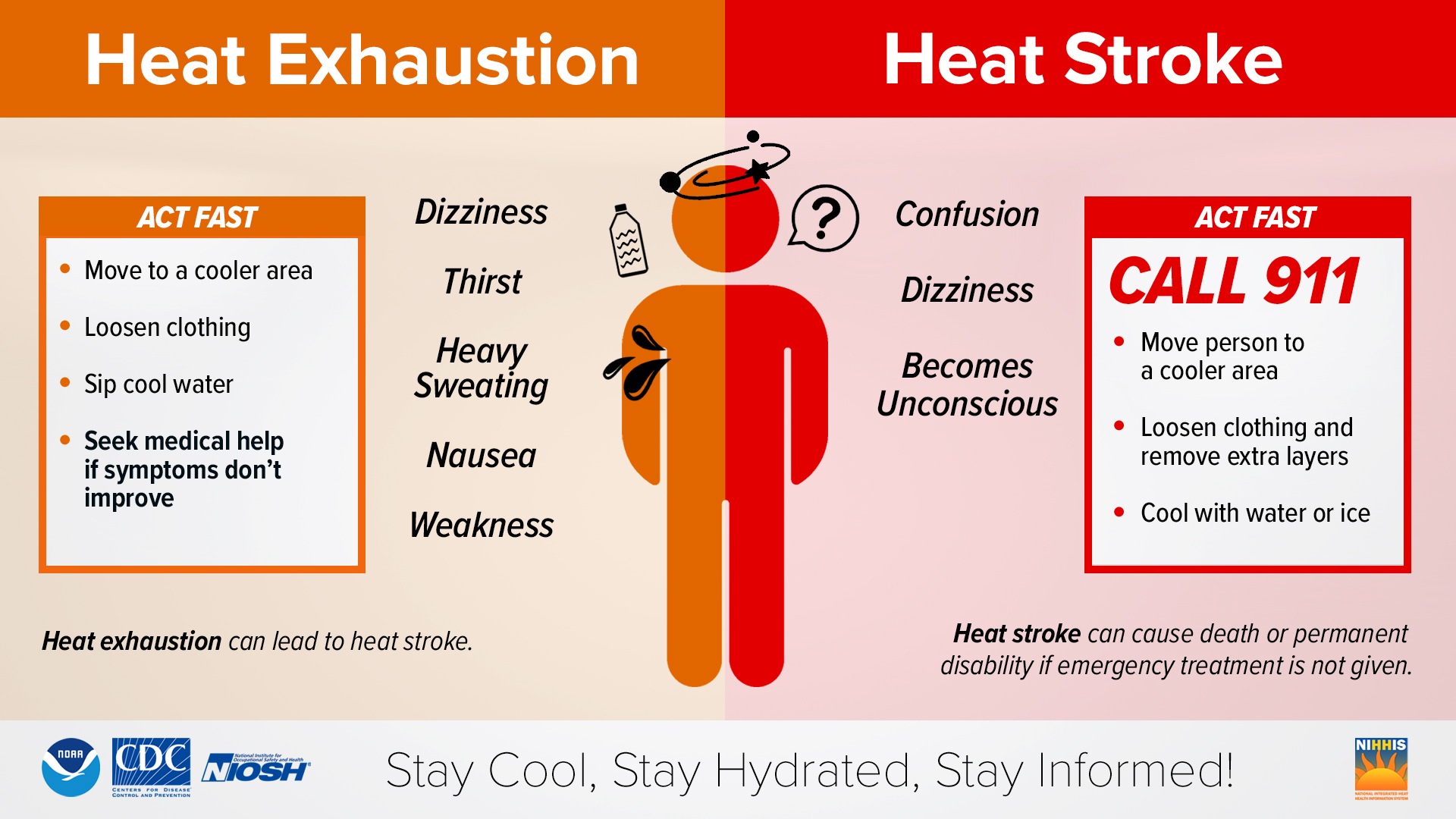Summer is synonymous with spending long, sun-drenched days playing or working outside. But that summertime fun can quickly turn into a dangerous health emergency if you aren’t prepared.
Heat advisories and excessive heat warnings are issued often in Florida and other hot spots around the country. According to the Environmental Protection Agency, extreme heat causes more than 1,300 U.S. deaths annually.
High temperatures may lead to heat-related illness, with heat stroke being the most serious. Exertional heatstroke occurs when a person’s body temperature rises above 105 degrees Fahrenheit and they can no longer naturally regulate their temperature.
“Exertional heat stroke usually starts with some sort of collapse,” said Rebecca Lopez, PhD, ATC, associate professor and program director of the post-professional athletic training programs in the USF Health Morsani College of Medicine’s School of Physical Therapy and Rehabilitation Sciences. “That is a main sign that something is wrong.”

Heat stroke usually starts with a collapse.
Other symptoms include dizziness, shortness of breath, confusion and nausea.
High humidity—another common feature of Florida weather—can combine with hot temperatures to make a person even more susceptible to a heat stroke, Dr. Lopez said, noting,
“People don’t usually get exertional heat stroke just because it’s hot outside.”
Your body regulates temperature by sweating, which produces a cooling effect by allowing the moisture to evaporate off the skin. High humidity, however, prevents the sweat from evaporating, so you only get hotter.
Dr. Lopez recommends, besides drinking plenty of water and taking regular breaks, that people spending time outside should “try to dress in light-weight clothing and keep some skin exposed to help that sweat evaporate.”
Heat-related deaths and illnesses are preventable and treatable. During organized sporting activities, it’s important to have an athletic trainer available to identify and treat heat stroke and other heat-related illnesses.
For example, have a heavy-duty plastic tub or a tarp readily available that can be filled with ice-cold water to immerse most of the body to quickly reduce a heat stroke victim’s body temperature.
“The key to treating exertional heat stroke is to get (the victim’s) body temperature down as fast as possible” Dr. Lopez said.

Rebecca Lopez, PhD, ATC
A key to being safe outside in the summer is acclimating to the heat. According to the Center for Disease Control and Prevention, heat acclimatization involves improving your heat tolerance by gradually increasing the intensity or duration of exercise performed in a hot setting. This usually takes one to two weeks. Many people don’t do this, which leads to problems.
“The summer is a really dangerous time with high school football teams and things of that nature,” Dr. Lopez said. “The first couple of summer practices are the most dangerous” because of the lack of heat acclimatization.
In the end, keeping summer days enjoyable requires care and planning.
“Avoid those hottest times of day, make sure you’re hydrated and ensure you are doing whatever you can to make sure you are in a healthy state to be out there in the heat.” Dr. Lopez said.

Videos & article by: Allison Long
